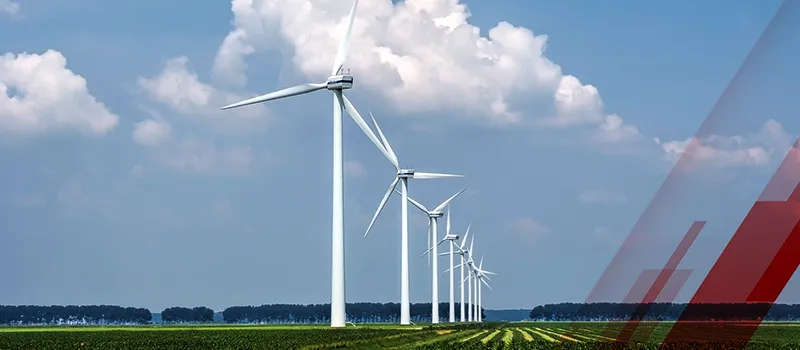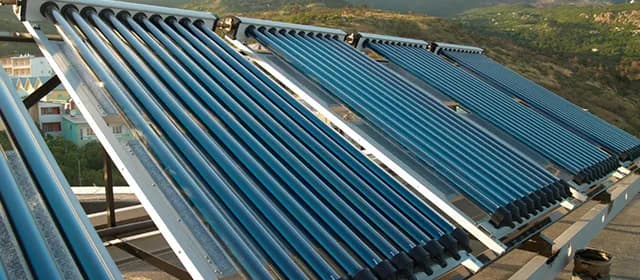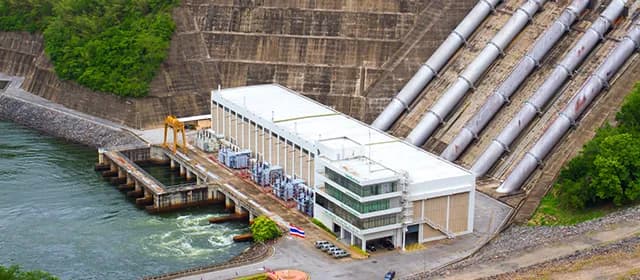Electricity is undoubtedly a valuable resource but have you ever been curious to know how it is generated? The answer lies in offshore wind energy - a superior powerhouse gained from towering turbines in the depths of the sea and generating an abundant supply of electricity. This incredible technology harnesses the power of the winds out at sea, generating electricity and offering a sustainable solution to our ever-growing energy needs.
So, without any further delay, let's dive deeper into comprehending it.
What is Offshore Wind Energy?
Offshore wind energy is a clean, renewable energy source that harnesses the force of wind on high seas, generating constant speed and no harmful greenhouse gas emissions. It is crucial for future electricity generation in tackling climate change.
How does Offshore Wind Energy Work?
Offshore wind energy works by capturing the force of the wind blowing across the open sea. Here's a breakdown of its functioning process.
- Offshore wind farms, located in oceans or large lakes, use tall turbines to manage abundant and consistent wind resources.
- The rotating blades of the turbines capture the wind's kinetic energy, which is converted into rotational motion.
- Turbines are equipped with a large generator. This generator inside the turbine then converts this motion into electrical energy.
- The generated electricity is transmitted via cables to an offshore substation, which transforms it to a higher voltage for efficient transmission.
- From the substation, the electricity is transmitted through underwater cables to an onshore connection point and integrated into the existing electrical grid for distribution to homes, businesses, and industries.
A recent study by Kings Research shows that the offshore wind energy market has immense growth potential and is expected to generate revenue of $72.35 billion by 2030, registering a CAGR (compound annual growth rate) of 10.70% from 2023 to 2030.
Unveiling the Importance of Offshore Wind Energy
Offshore wind energy is a vital part of the global renewable energy transition. It offers abundant renewable resources, reduced environmental impact, and higher efficiency. It contributes to scalability, job creation, climate change mitigation, and energy security.
Offshore wind energy engineering focuses on the design, development, construction, and maintenance of offshore wind farms and associated infrastructure. Additionally, it is responsible for ensuring the efficient and safe operation of offshore wind turbines and the transmission of electricity generated from these turbines to the onshore grid.
Hence, offshore wind farms, located far from the coast, protect marine ecosystems, reduce land use conflicts, and generate higher efficiency with fewer turbines, offering potential expansion.
Offshore wind energy companies and their offshore wind energy projects contribute to job creation and economic growth by reducing greenhouse gas emissions and combating climate change. To support this approach, the U.S. Department of Energy (DOE) has released a strategy aiming to deploy 30 gigawatts of offshore wind energy by 2030, offering carbon-free electricity, creating jobs, and reducing carbon emissions.
How are Trends Reshaping Offshore Wind Energy Fields?
Recent trends that are reshaping the realm of offshore wind energy include:
- Floating wind farms
EDF Renewables' floating offshore wind turbines are one of the most exciting technological developments. This technological advancement enables wind farms to be securely anchored to the ocean floor and strategically positioned in deeper offshore waters with stronger winds. As a result, this significantly enhances the capacity of offshore wind power.
EDF Renewables’ Blyth was the first offshore wind farm that used "float and submerge" gravity-based footing and it plans to increase the number of these floating turbines at an offshore wind farm in England to increase the site's energy capacity. These floating wind farms are affordable and easy to install.
- Semi-Submersibles
Semi-submersibles are floating wind turbines with multiple columns and pontoons for stability. They are designed to optimize foundation structures and achieve wind turbine stability. Innovative designs like WindFloat and VolturnUS optimize the foundation structure.
Similarly, in 2022, the Department of Energy (DOE) initiated an Energy Earthshot program intending to reduce the cost of deep water floating offshore. The wind turbine can be positioned at the center or on top of one column. Semi-submersibles are popular due to their ability to apply to a wide range of water depths, lower anchoring costs, simpler transportation and installation, and the option to tow them to the desired location.
- Taller wind turbines
The offshore wind sector is set to advance with the introduction of taller wind turbines equipped with massive blades. The successful testing of the Haliade-X 13MW turbine has paved the way for its deployment at the Dogger Bank wind farm located off the coast of Yorkshire. With its remarkable 107-meter-long blades, a single rotation of this turbine can generate enough electricity to power an average household in the UK for over two days.
- Interconnectors
Interconnectors, which are large undersea cables that transport electricity to land, are playing an increasingly crucial role in enhancing capacity between the UK and its European counterparts. They also help lower electricity expenses for households and businesses.
This innovative approach is bringing benefits to numerous nations through its implementation. In 2020, British company National Grid’s interconnectors reportedly prevented above 1 million metric tons of CO2 emissions, which is equal to planting 50 million trees or taking almost 700,000 cars off the road.
Similarly, by 2025, Norway, Denmark, France, the Netherlands, and Belgium are projected to have a total interconnector capacity of 8 GW. This capacity is expected to help prevent approximately 100 million metric tons of CO2 emissions from now until 2030.
Concluding Remarks
Offshore wind energy has emerged as a game-changer in the quest for sustainable and clean energy solutions. Its importance cannot be overstated, as it offers a multitude of benefits ranging from reducing greenhouse gas emissions to bolstering energy independence and creating new job opportunities.
By leveraging the power of the winds that sweep across our oceans, we have the potential to transform our energy landscape and pave the way for a brighter and more sustainable future. As we continue to explore and invest in offshore wind energy, we witness the potential of this remarkable technology to shape a world where renewable energy reigns supreme.




